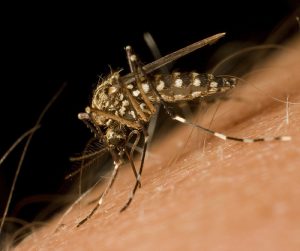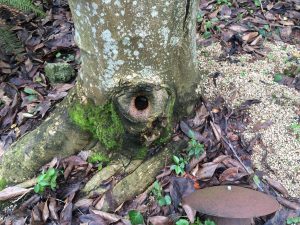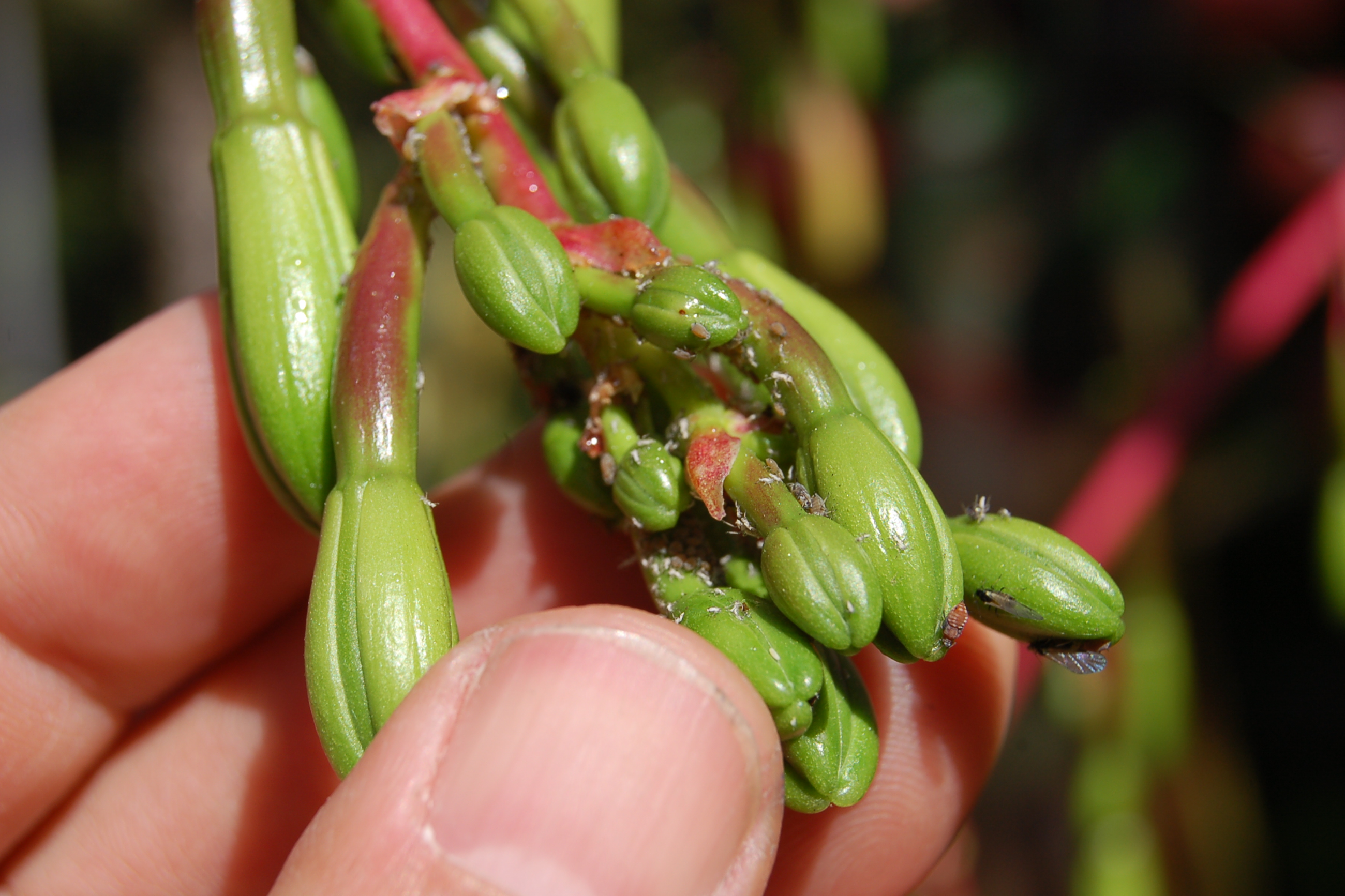
photo by Alicia Abela, iNaturalist Network
Calm afternoons and early evenings high pitched whining mosquitos visit me while working in the garden or relaxing on the deck. Since I live and work next to a creek in a forested neighborhood I shouldn’t complain. Yet, over the years I have preached and taught ecological management of pests, and so in my own backyard I’m trying once again to practice what I preach.
Which Species is Causing this problem?
Most of my problems are caused by the western treehole mosquito (Ochleoratus sierrensis), identified by its small dark body, white striped legs & back. These mosquitos are active April through August in forested areas. Adults mature around the spring equinox and are most active at dusk in areas near the trees that they breed in.

Females deposit eggs in damp tree holes, tree crotches or in containers with wet leaf debris. Their eggs can last for many years. Following winter rains some of the eggs hatch into larval wrigglers that feed on organic debris and microorganisms in water. Other eggs remain dormant for years. In ten days to five months adults emerge from pupal tumblers and the breeding and blood feeding begins.
Diseases?
Canine and feline heartworm disease (filariasis) is spread by this mosquito in California. A parasitic roundworm (Dirofilaria immitis) infects the mosquitos and is passed on to dogs, cats, coyotes and foxes. These animals serve as sources for more infections. Human cases are very rare.

diagram from Animal Medical Hospital, Charlotte NC
For those with dogs there is a risk assessment chart developed in El Dorado County to help evaluate the likelihood of infection. Medicines are available to treat preventatively or after infection.
Outdoor Dog Indoor Dog
Heavily Wooded (wet) High Heavily Wooded (wet) Moderate
Heavily Wooded (dry) Moderate Heavily Wooded (dry) Moderate
Not Wooded (Urban) Low Not Wooded (Urban) Vey Low
Do
- Reduce breeding habitat in accessible areas.
- fill holes in trees; carefully remove leaves and twigs & fill holes with either synthetic water absorbing granules, expanding foam or tamped down sand.
- drain standing water in gutters, containers, bird baths and buckets
- Release mosquitofish (Gambusia affinis) in small ponds, local mosquito abatement districts provide and/or deliver them for free

- Treat pets with medicines that prevent infection if risk is intolerable
- Apply mosquito repellents containing effective ingredients such as 30% lemon eucalyptus, 20% picardin or 25-30% deet
Don’t
- Fill tree holes with concrete; adds weight to the tree, and does not flex or bend, causing internal friction and damage to the tree over time.
- Drill drain holes; opens the tree up to further damage to healthy tissue, and infection.
- Clean out decay from the cavity before filling; causes additional wounding and opens the tree to new infections.
- Paint the opening or any tree wound; does not benefit the tree and may encourage additional rot.
Maybe Try
- outdoor mosquito traps that use carbon dioxide and octenol as attractants
- outdoor tabletop products that circulate repellents in the air
A Few References
Insect repellent guide, US EPA 2016 – https://www.epa.gov/insect-repellents/find-insect-repellent-right-you
Insect and tick repellent study, Consumer Reports, 2016 http://www.consumerreports.org/cro/insect-repellent/buying-guide
Overview of Mosquito Control in CA, CA Department of Pesticide Regulation http://www.cdpr.ca.gov/docs/dept/westnile/mosqover.pdf
Mosquitos from Trees, California Agriculture, 1980.
Mosquito Attractants and Traps, Common Sense Pest Control, 2003.
Reduction of mosquito biting-pressure: Spatial repellents or mosquito traps?, Acts Tropica, 2013.
Western Treehole Mosquito and Dog Heartworm Disease, Marin/Sonoma Mosquito and Vector Control District http://www.msmosquito.com/sites/default/files/brochures/MSM-Treehole-4%2023-2.pdf
Western Treehole Mosquito, Napa County Mosquito Abatement District http://napamosquito.org/vectors-and-pests/mosquitoes/common-mosquitos/western-treehole-mosquito/
